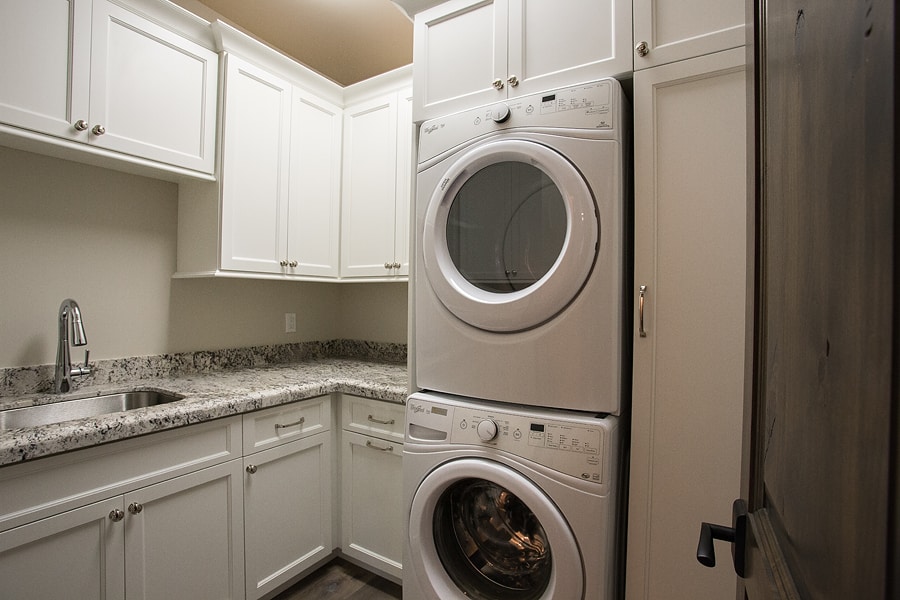 When the more traditional couple, aka married folks, divorce and go their separate ways, the process of dividing up the property is dictated by the law, for the most part. But what about those who choose to live together without the legal binds of marriage, which is approximately 14 percent of those in the age group of 25 to 34 years.
When the more traditional couple, aka married folks, divorce and go their separate ways, the process of dividing up the property is dictated by the law, for the most part. But what about those who choose to live together without the legal binds of marriage, which is approximately 14 percent of those in the age group of 25 to 34 years.
And many of those 14% have more than divvying up the dishes, linens, and CD collection. They plunged in together and purchased a house. The rules for this situation is different, so if you find yourself considering cohabitation without a walk down the aisle and that legal piece of paper, here are some things you should know if that relationship doesn’t hold.
Dividing Real Estate Assets – The Difference When You’re Not Married
There are options for married couples that divorce when it comes to dividing property such as a house or other real estate. For instance, one spouse can buy the other spouse’s part, or the property can be sold outright, and the profit is split. If the couple can’t come to an agreement, the court can make the decision for them and force a sale.
However, the court doesn’t have much jurisdiction when it comes to unmarried homeowners, if the property is equally owned by the unmarried couple. This means that both names need to be on the title. Who paid the most of what is irrelevant. If one person is determined not sell, it is a problem for the other person to resolve, not a divorce court.
So, what happens if one of the persons agrees to buyout the other person? This can be an expensive move because the transferring of assets also entails tax issues. For a married couple getting a divorce, this is a tax-free transaction. It is recommended that the unmarried couple seek the advice of an accountant and determine what the taxes are before making this decision.
How Can Unmarried Couples Protect Themselves?
Because there are legal complications such as that discussed earlier, experts advise for unmarried couples have a written agreement in place before making a major purchase like a house. Yes, this can take the romance out of the relationship, but it is the best way for both parties to protect themselves.
Today, a handshake just isn’t enough if an unmarried couple decides to buy a home as a couple. In just about every state, any agreement made regarding real estate, must be a written agreement. It doesn’t need to be a formal document drawn up by a lawyer either. It can be a simple one-page agreement that states how the property will be divided if the relationship ends.
This type of contract is referred to as a “Cohabitation Agreement,” and it should state at the minimum the following:
- If the relationship ends, how will the real estate be divided? Options are selling the property and divide the proceeds, or one person buy the other person’s part.
- Determine what percentage of each party will receive of the profits when the property sells
- If the two parties can’t come to an agreement at the time of the split, how will those disputes be handled? Before going to court, seek the services of an unbiased mediator is the less expensive route.
What If There Isn’t A Cohabitation Agreement?
If no written agreement is drawn up between an unmarried couple prior to buying a home, it can become an expensive and long legal battle. The legal fees alone can reach $25,000 and upward quickly and can even be more than the property is worth. With that being said, it would be less expensive to have a lawyer draw up the agreement prior to making the purchase.
Of course, for one person to bring up the cohabitation agreement can be a delicate time, which is why more unmarried couples buying a home together won’t bring the subject up. It can be an awkward situation for a couple, but the future is unknown and protecting one’s self is key to these things. By mapping out how things will be done and stating who owns what ahead of time is only wise.
Click here to create a custom home search
 Whether you are buying, selling or living in a home, termites are likely something you will encounter. The U.S. Department of Agriculture estimates that homeowners spend more than $2 billion annually on termite pest control and on repairs caused by termite damage. Termites also damage more than 600,000 homes annually here in the United States, thus making termite prevention and control a critical part of home maintenance.
Whether you are buying, selling or living in a home, termites are likely something you will encounter. The U.S. Department of Agriculture estimates that homeowners spend more than $2 billion annually on termite pest control and on repairs caused by termite damage. Termites also damage more than 600,000 homes annually here in the United States, thus making termite prevention and control a critical part of home maintenance.



 When the more traditional couple, aka married folks, divorce and go their separate ways, the process of dividing up the property is dictated by the law, for the most part. But what about those who choose to live together without the legal binds of marriage, which is approximately 14 percent of those in the age group of 25 to 34 years.
When the more traditional couple, aka married folks, divorce and go their separate ways, the process of dividing up the property is dictated by the law, for the most part. But what about those who choose to live together without the legal binds of marriage, which is approximately 14 percent of those in the age group of 25 to 34 years. Picture this: Your perfect backyard, as designed by you. When we had our vision for a backyard revamp, we started with a pencil and paper to try and capture our thoughts. But the availability of free online tools taught us there’s a better way to get your ideas out there and start building your dream backyard. Here are a few tools that we came across that were useful:
Picture this: Your perfect backyard, as designed by you. When we had our vision for a backyard revamp, we started with a pencil and paper to try and capture our thoughts. But the availability of free online tools taught us there’s a better way to get your ideas out there and start building your dream backyard. Here are a few tools that we came across that were useful: 2. Let your ceiling fans run in every room
2. Let your ceiling fans run in every room How about the monsoon storms this year, folks! Have you experienced any property damage yet? We have trees blocking our neighborhood roads in North Scottsdale and our neighbor’s pool toys ended up in ours last night. It’s been impossible to get a hold of my landscaper to get him to clear my driveway of debris and broken branches. Those guys must be swamped this time of the year! So, in light of the recent crazy storms that continue to sweep through the valley, I wanted to remind you of some important precautions to avoid or minimize the damage Monsoon storms can cause:
How about the monsoon storms this year, folks! Have you experienced any property damage yet? We have trees blocking our neighborhood roads in North Scottsdale and our neighbor’s pool toys ended up in ours last night. It’s been impossible to get a hold of my landscaper to get him to clear my driveway of debris and broken branches. Those guys must be swamped this time of the year! So, in light of the recent crazy storms that continue to sweep through the valley, I wanted to remind you of some important precautions to avoid or minimize the damage Monsoon storms can cause: When you’re planning an upcoming move or just taking a trip, you may not think twice about bringing the family pets along. You’ve got packing, buying and selling, and tons of other changes to make, but don’t forget about your furry companions in the midst of all the moving chaos! Pets can be difficult to relocate, depending on the type of animals your family has, so it’s always important to brush up on the best tips and suggestions for ensuring that your animals have the smoothest and safest relocation experience possible. After all, they’re members of the family, too, so don’t leave them out when you’re making plans for how to handle your big move.
When you’re planning an upcoming move or just taking a trip, you may not think twice about bringing the family pets along. You’ve got packing, buying and selling, and tons of other changes to make, but don’t forget about your furry companions in the midst of all the moving chaos! Pets can be difficult to relocate, depending on the type of animals your family has, so it’s always important to brush up on the best tips and suggestions for ensuring that your animals have the smoothest and safest relocation experience possible. After all, they’re members of the family, too, so don’t leave them out when you’re making plans for how to handle your big move. Do you have a small kitchen? Are you looking for ways to spruce up your space and make the most of what you have to work with? Whether you live in an older home with a more old-fashioned kitchen design or you live in an apartment without a lot of space to work with, don’t worry. You have options when it comes to figuring out the best way to put your kitchen storage to work for you. Check our tips below to help you find the best options for your needs.
Do you have a small kitchen? Are you looking for ways to spruce up your space and make the most of what you have to work with? Whether you live in an older home with a more old-fashioned kitchen design or you live in an apartment without a lot of space to work with, don’t worry. You have options when it comes to figuring out the best way to put your kitchen storage to work for you. Check our tips below to help you find the best options for your needs.